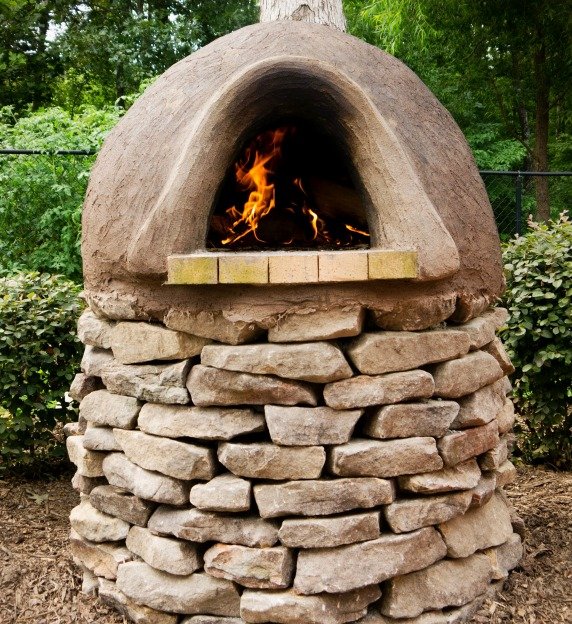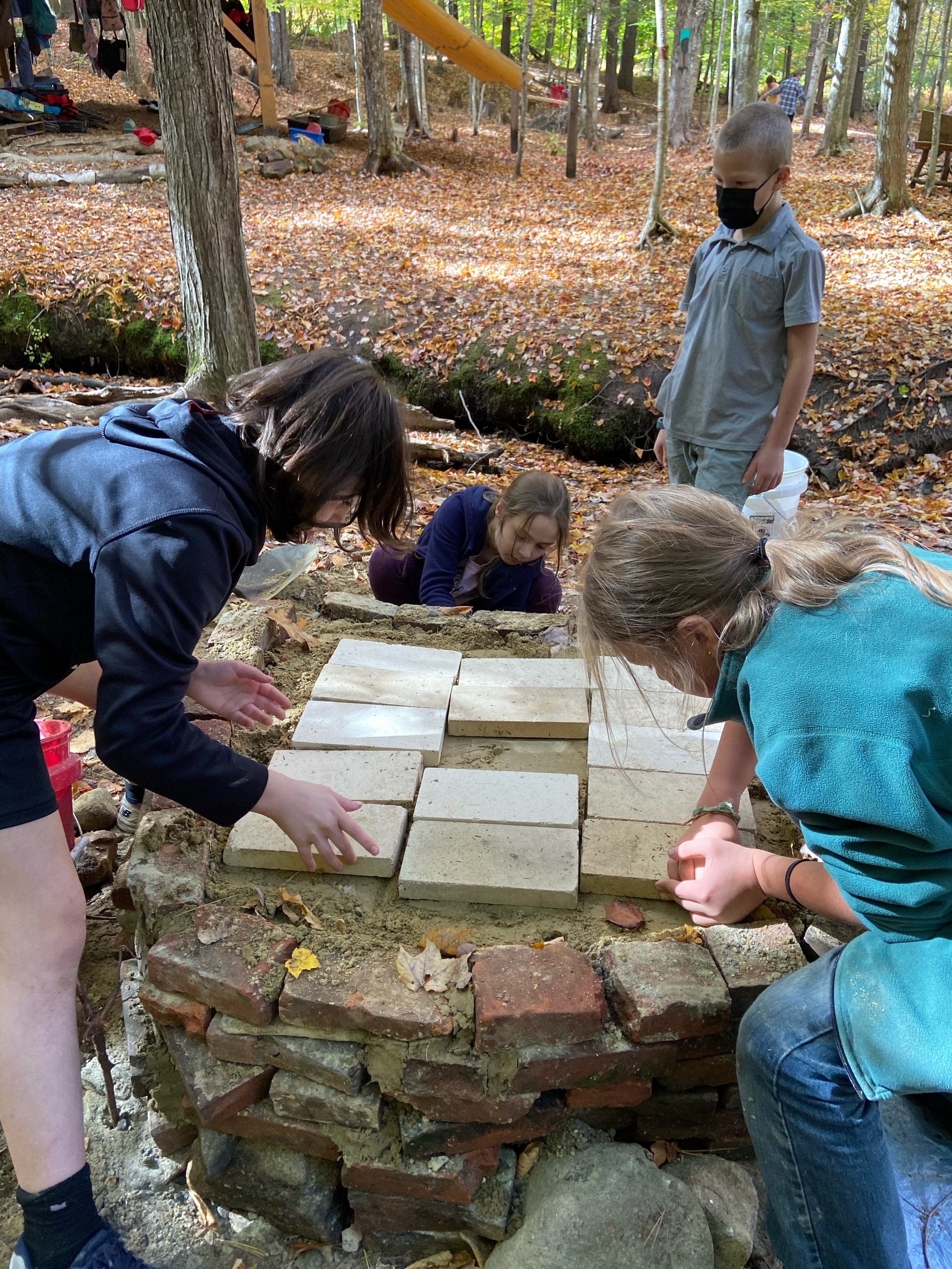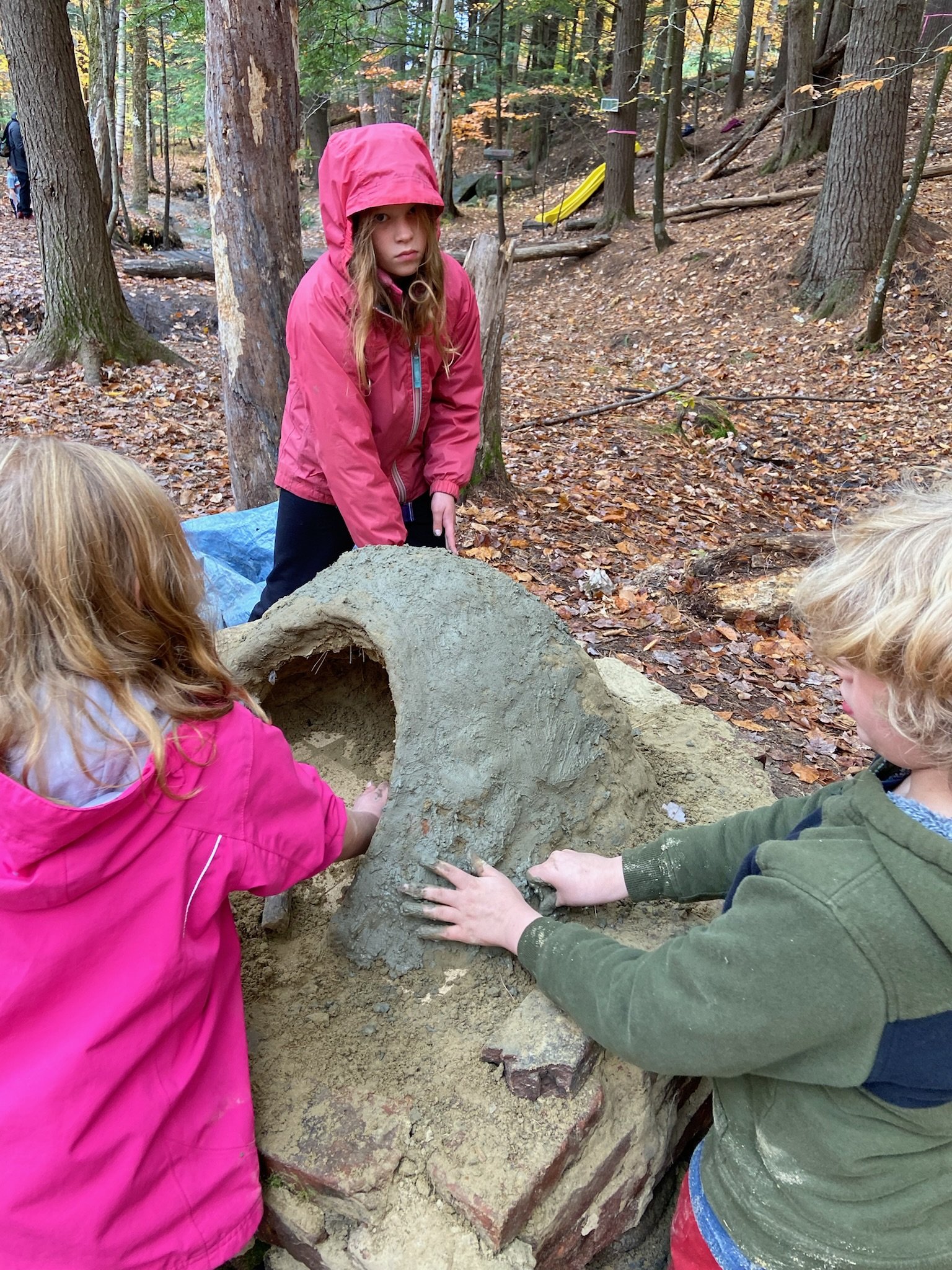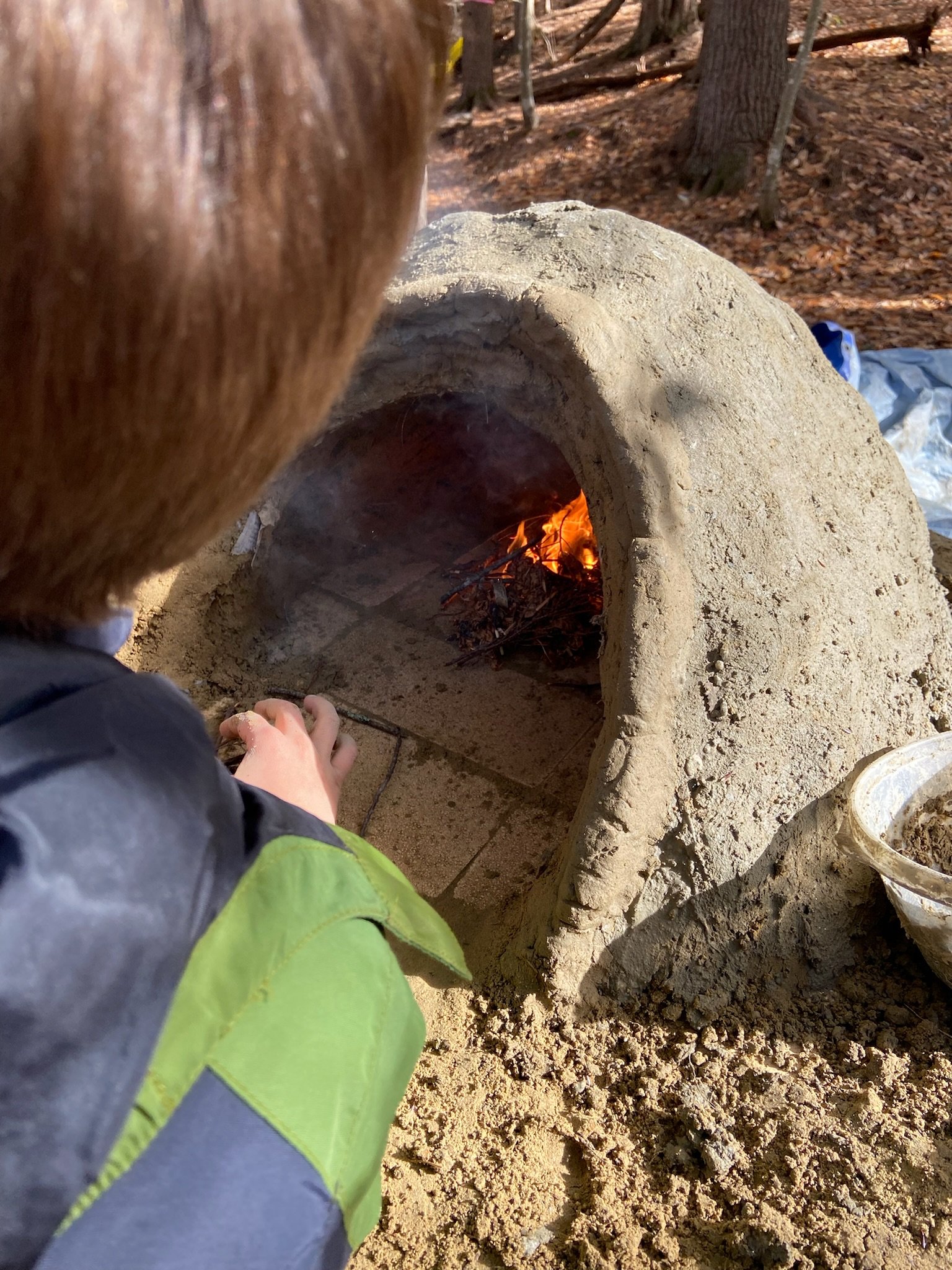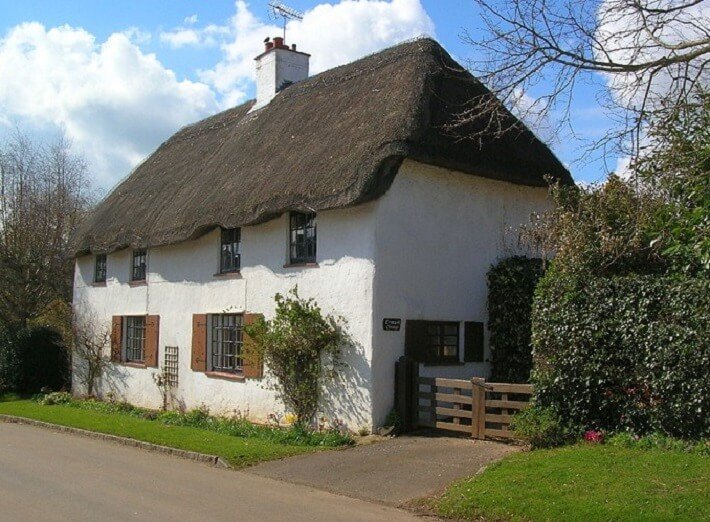upper elementary cob oven project
Fundamental to education at MVCS is connecting students to the land in which they live, work, and play. Students spend a good part of their time at MVCS studying their local water sources, forests, and air through a lens of preservation and conservation, as a way of fostering a sense of community through environmental stewardship. This year, Kelsey Gadwah (Upper El Assistant) is guiding students through a series of projects to deepen their understanding of human relationships with the landscape, both in the past and present.
For their first project, Upper El students are constructing a cob oven from materials gathered from Fort Creek and other nearby sites. Integrated into this construction project are lessons about structure and forces, measurement and data collection, as well as geometry and basic math skills. With construction slated to finish in early October, they hope to bake pizzas for our first Family Friday!
(For more information on cob, scroll down!)
Adding gravel to the foundation of the cob oven. Students worked from construction plans to calculate the base size needed to make a larger oven (for all those hungry UE kids).
Digging clay from the stream for the cob mixture
Mixing cob with their feet!
Adding the firebrick base of the oven.
Adding the cob layer on top of the sand castle mold.
Lighting a fire to dry out the cob thermal layer.
Moving a sled full of gravel and sand requires problem-solving and teamwork
Filling in the foundation with gravel and sand
Moving sand to the cob-mixing tarp
More gravel!
Creating the “sand castle” mold on which the cob will be laid.
Hollowing out the oven.
click here for more photos
What is “cob?”
Cob and thatch cottage in Northhamptonshire, England
Ever heard of adobe (i.e. mud brick)? Well, cob is similarly a composite of sand, clay, straw, and earth, mixed with water; instead of being formed into blocks and dried prior to construction, however, it is applied in its wet form. Cob as a construction material originated in North Africa about 10,000 years ago, but was also adopted in other parts of the world. Locally-sourced and cheap, the materials for cob construction do not require any special tools or equipment to extract, making it a widely accessible and a sustainable technology.
With the rise of the industrial revolution (mechanization, railroad and canals, ), fire brick and other materials became more readily available (rely on fuel source for firing), leading the Western world to largely abandon cob construction. However, over one third of today’s population live in structures made from a “mud-based” material.
Why cob? land, culture, and community
Frequently, we (consumers) don’t think about the amount of energy that goes into sourcing construction materials and getting them to the worksite (which also adds to cost!). Think about one of the most common industries in New Hampshire: the logging industry. Loggers have to clear logging roads, cut the trees, and transport them to mills; the mills transform the logs into lumber; the lumber is then shipped all over the country on the backs of trucks or trains, which rely on fossil fuels. Utilizing local materials effectively eliminates our reliance on this finite resource. In the United States, cob building was not widely utilized- adobe was more common, particularly in the deserts of the Southwest. However, recent trends in sustainable housing and construction have created a new interest in the use of cob for home construction, even in rainy and cold climates!
Although students are familiar with New Hampshire’s forests and their economic uses, cob construction highlights an alternative, sustainable resource for construction. While in all likelihood cob will not replace lumber, the experience of constructing a cob oven provides a hands-on opportunity for students to understand that resource extraction and construction techniques need not damage or negatively impact their environment. In addition, students witness the immediate impact of their harvesting of materials (for example, digging clay from the stream in Fort Creek), leading them to be mindful of their resource extraction: in their daily use of the stream, through play or study, they appreciate the multiplicity of roles it plays in their own lives and in the broader Fort Creek ecosystem. When harvesting clay, students consciously chose multiple harvesting locations to reduce their impact on their stream, taking only what they needed to make their oven.
Learning about responsible harvesting and the benefits of sustainable natural resources gives students the tools to understand how resource extraction affects the earth and to share this knowledge with their families, communities, and friends, building towards a culture that values conservation and stewardship.


